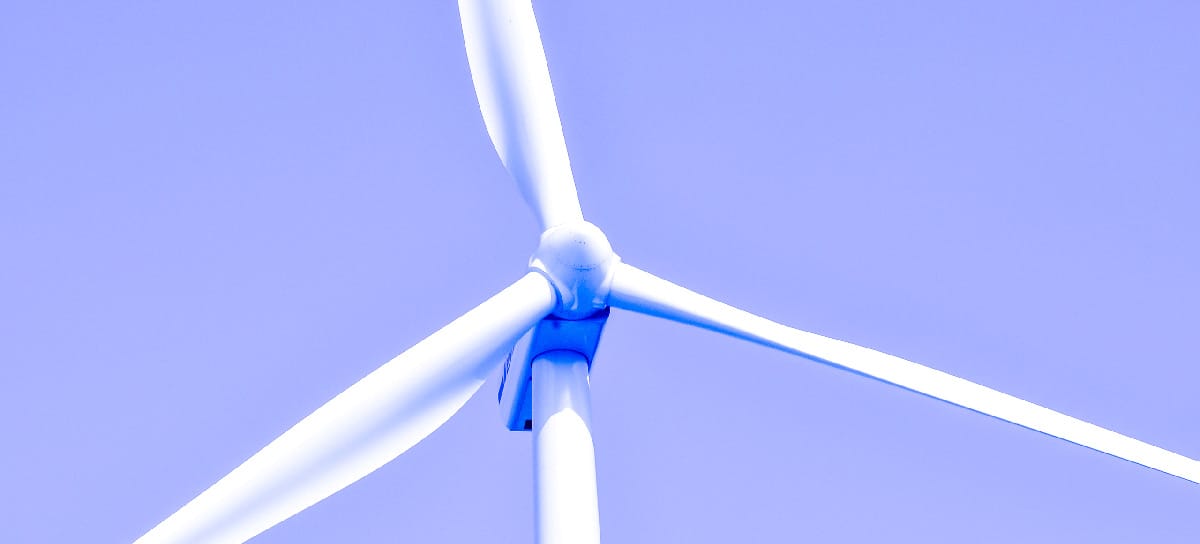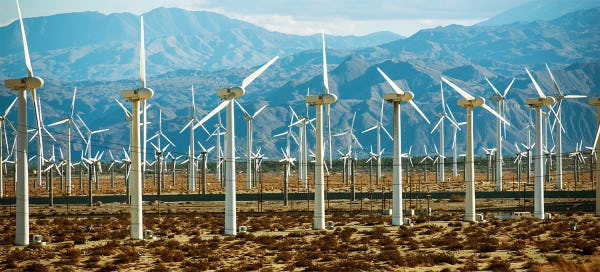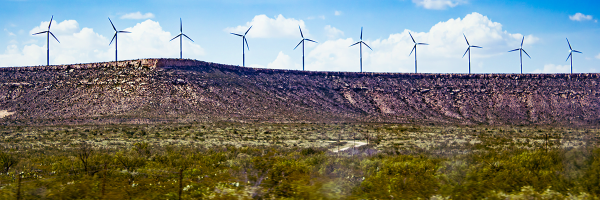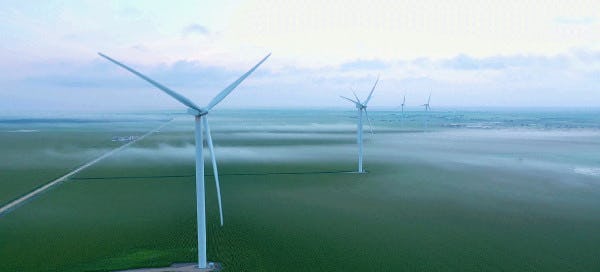Wind Energy FAQ
Texas is a leader in wind power. And while everyone has an opinion about it, Texas wind power plays a crucial role in greening up our grid. Wind is always on our mind (and blowing through our hair), so we’re answering your tough questions to debunk some myths around one of our favorite energy sources.
We are big fans of wind for several reasons:
Wind happens naturally. No drilling, digging, or pollution. It's inexhaustible, clean energy, which reduces our reliance ability on fossil fuels, which are neither clean nor inexhaustible.
Wind keeps our air and water cleaner, and that’s something everyone on the planet can get behind.
Wind bolsters the economy. Since the wind blows in our backyard, we avoid importation taxes. And as more people make the switch to wind, more jobs happen. Last year saw more than 120,000 people working in wind. That’s Waco’s population.
Read on to learn more, and if you have a question you don’t see below, reach out to wearelistening@gotrhythm.com.
Why should I choose wind energy if the turbines aren’t recyclable?
Roughly 85% of wind turbine component materials are recyclable. From the steel and gearing to the copper wire and electronics. The remaining 15% comes from fiberglass in the blades, which isn’t easy to manage. But as the technology of wind turbines and their blades continue to evolve, so does the process to dispose of them responsibly. Engineers and scientists are working on simplifying the process and have developed a way to separate the resins and fibers in the blades and press them into pellets and fiberboards that can be reused for floors and walls in homes. Add this to the fact that turbines are producing 100% clean energy, and we believe wind is the winning choice.
Don’t you think windmills are an eyesore?
We love our Texas landscape and the amazing panoramas we see daily. We happen to think that gorgeous Texas landscapes with 100%-clean-energy-producing wind turbines are things of beauty. But even if you disagree, you probably agree that, given demand, electricity generation needs to be done at scale, meaning large facilities. Compared to oil refineries, coal plants, nuclear facilities, and gas generators, we think a field of turbines spinning in the Texas breeze fairs well.
I have heard turbines kill birds, butterflies, and bees? Is that true?
The U.S. Fish and Wildlife Service estimates between 140,000 and 500,000 bird deaths are caused each year by wind farms, as well as tens to hundreds of thousands of bats. We agree this is a problem to be addressed and applaud innovative solutions, like smart cameras that curtail turbines when birds approach a danger zone. It's also important to remember…
Windows are responsible for 676 million bird deaths on average every year
Vehicles cause 214 million bird deaths on average every year
Cats kill birds more than those two—combined
A review of data shows that building and powering modern society affects animals and the environment – Rhythm Energy’s focus is how to most responsibly manage these challenges while allowing humanity to prosper.
Given all the labor and energy used in producing windmills, doesn’t that make them economically or, at least, environmentally harmful?
The upfront work to transport and assemble a wind turbine is a big task—there's no denying that. But so is building any power generator. Windmills take a great deal of energy to create. But they pay back their impact in the energy required for their production typically within months or a few years – and, meanwhile, they have a useful life of decades, providing zero-carbon electricity for that time and jobs. In fact, the wind industry employs 120,000 people nationwide and that means new job opportunities for Americans as renewables continue to grow.
Isn’t building a windmill just too expensive and not cost-competitive?
In an annual study of all sources of electricity generation, Lazard, one of the world’s largest investment banks, compared the cost of electricity generated by different generation sources. This study, Lazard’s Levelized Cost of Energy Report (LCOE) 2020, showed that, without government subsidy, onshore wind is the lowest cost generation resource. Government support only helps further improve these leading economics. Similarly, utility-scale solar is also very competitive, beating the marginal cost of even maintaining existing coal plants and competing well with gas plants.
Isn’t nuclear the future and not wind?
Nuclear power is a low-carbon source of generation and one that can provide consistent baseload power. But the key challenges with nuclear are twofold.
First, nuclear accidents can have catastrophic outcomes, with impacts well beyond anything linked to wind and solar (in reality, nuclear power is historically much, much safer than fossil fuels but people just don’t fear coal mining accidents as much as they fear nuclear meltdowns).
Second, we do not have good solutions today for how to handle nuclear waste. The radioactive material produced from nuclear generation remains hazardous for thousands of years. The best solution right now is to bury this waste deep underground, but no one likes the idea of radioactive material being buried in their state from a safety perspective.
Some people think that nuclear can be a key contributor to a low-carbon future given its baseload quality. We think wind and solar energy are important players, too.
Want to learn more about nuclear energy? Check out our blog: What is Nuclear Energy?
Didn’t the February Freeze prove that wind doesn’t work?
Wind power had some weatherization issues in February but was consistently in the range of 4GW to 8GW of output – close to wintertime capacity forecasts of 6GW. Compare that to fossil fuel resources, which missed forecast expectations by more than 50%. We’re not here to point fingers, just point out the facts.
About 20% of the total electricity generated in Texas right now is from wind, and it’s seen a steady increase year-to-year because its low ongoing cost makes up for when the wind is not blowing. Need more convincing? Check out our other resources here and here.
What if we just planted more trees vs. building more turbines?
Why not both? Wind turbines reduce global emissions and trees process the emissions that do occur. As an electricity company backed by renewable energy, a future with more wind power and more trees is the world we want to live in.
You do realize you need the oil industry to make and run those turbines?
Most of our strong materials rely on petrochemicals for production, but that doesn’t mean we should stop trying to advance in solving big challenges – like clean air and water. That’s why we want to limit how much of our supply chains are dependent on fossils fuels, and we see wind turbines are a good compromise.
If the wind stops blowing, blackouts happen. Right?
The possibility of a blackout is an electricity grid capacity issue, no matter the energy source. The electricity grid is comprised of many sources of power generation (coal, natural gas, nuclear, wind, solar), so if any of those resources do not deliver the forecasted power needed for everyone, then the grid supply could be less than customer demand (the power you need to keep your lights on).
This could result in potential blackouts. Most of the time, the shortfall in supply is driven by traditional power plants being offline (whether scheduled or unscheduled) during critical times. However, there are some ways to protect yourself from risk through renewable means. For example, if you were to install rooftop solar panels and were able to store that power through batteries, you could use that stored power in times of blackouts (kind of like having gas-powered generator backup, but this would be the cleaner way).
We hope these answers have helped clarify your wind questions. At Rhythm Energy, we're proud to offer renewable energy plans to Texans that are backed by renewable energy sources like wind and solar. Find the best electricity plan for you by browsing our website today!
Sources:
GE announces first US wind turbine blade recycling program with Veolia
Bat Fatalities at Wind Turbines—Investigating the Causes and Consequences
Overblown: Wind turbines don’t take more energy to build than they will ever produce
Wind power was the largest U.S. renewable energy provider in 2019
Levelized Cost of Energy and Levelized Cost of Storage – 2020
Keeping the balance: How flexible nuclear operation can help add more wind and solar to the grid




